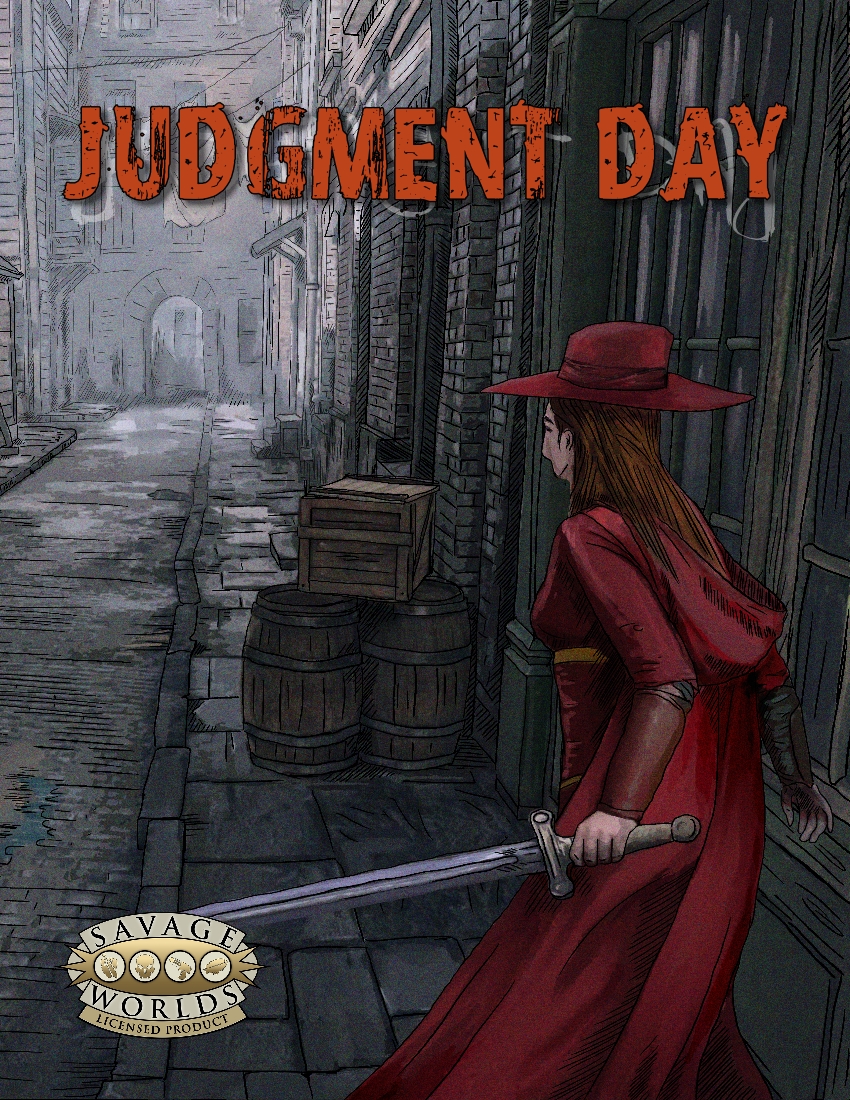Right Writing
By The Warden

By sure one the big concerns in RPG design is presentation of the words. You no write sentence good and make things clear, them going to make lots of differences.
Relax, gentle readers, I didn’t bang my head again. That first paragraph was poorly written to grab your attention and start off this week’s topic: clarifying the rules. Amongst every step of the tabletop game design process, this one is perhaps the most important for without it, all your hard work could be lost in the translation. How the rules are presented is just as crucial as how the game is played and in a genre like roleplaying games, there’s a fine balance between interpretation and misunderstanding and it changes with every game. It’s a lot like cursive writing. Technically, you have written out words, yet individual handwriting can lead to struggling translations and other difficulties for the reader, particularly in the case of doctors and their prescriptions.
The trouble with writing RPGs is that it may never be perfect for numerous reasons beyond the designers’ control. Many releases featuring huge page counts still release errata based on feedback and queries sent in by the thousands of players and Gamemasters, all of whom apply their own challenges and wild experiments at home. There’s also the well-known types of roleplayers (i.e. rules lawyers) and not every RPG is best written for every type, or difficulties arising from higher level play, or any of the numerous ways all your hard work is pulled out from under your feet. Many publishers provide an ongoing advice column on websites or regular publications answering these questions even years after the game’s initial release and errata PDFs making minor tweaks and adjustments based on player feedback. Even Pathfinder with its 400+ page core rulebook and massive popularity after being in one existence or another for over twelve years released errata recently making revisions to certain class features. And one of the stated goals of Fate Core is to revise the text after ten years in one form or another.
“…Evil Hat is proud to bring you Fate Core: the latest evolution of the Fate role-playing game system. Inside you’ll find refined, clearer language about every part of the game — ranging from streamlined language about aspects and skills, to a unified approach for game actions and outcomes, to our trademark, rock solid GM and player advice.
Simply put, Fate Core is the best version of Fate we can possibly make, built upon over a decade of play and design experience by Evil Hat, and with the Fate player community at large, taking the best lessons from all of gaming and distilling them into a cohesive, compelling whole.”
Ironically, it seems the higher a game’s page count, the more room for misinterpretations. Games with defined and specific rules for many situations are constantly broken down and analyzed for their true meaning with the same vigour and debate as Vatican scholars interpreting religious scrolls. Some independent publishers even use the game’s open licenses to provide their own “basic” or “advanced” version of the game incorporating some of their house rules to simplify or maximize the mechanics and even run into their own problems with definition.
WRITING AIDS – LAYOUT AND EXAMPLES
Writing a roleplaying game is a combination of many pieces all fitting into a single puzzle. From sentences to paragraphs to sections to chapters, every component of a game’s text has to be carefully considered and plotted for optimum performance. Like roleplaying itself, there’s no one way to do it and many possibilities can be borrowed from other systems. Take a look at the Marvel Heroic Roleplaying Basic Game‘s writing and you’ll find graphics are used to help explain the mechanics, shortcutting the amount of text and avoiding any confusion with their dice pool examples. This may seem like a layout decision, but when the text specifically refers to a visual example, it becomes a writing element. If they tried to provide solely text-based examples, there could be quite a bit of trouble catching onto a rather complex mechanic. Simultaneously, it helps the reader identify those symbols throughout the book when they are used for layout purposes (such as stat blocks and Doom Pool sidebars) as well as teach new roleplayers how to recognize their funky new dice.
Examples are a universal… well, example of effective use of text to describe the mechanics. It helps those who instantly comprehend your explanation to verify their understanding and seal the deal with those who might struggle to learn. It applies a standardized teaching process whereby we learned how to use math equations by reading examples and practising before we got to the final test. Particularly when it comes to multiple outcomes through the same rule, multiple examples may be necessary to cover all the bases.
They’re also incredibly helpful in demonstrating how random dice rolls can define a character’s action and results. Dropping a bunch of dice on the table and translating them into a detailed description looks like magic through the eyes of a new player, but many experienced players learn to incorporate such expressions flawlessly in their games, player and Gamemaster alike. It provides a visual clue to the reader while hinting at a suggested style of play, such as players talking in character. Examples are useful to help clarify generic rules such as initiative modifications, attacking multiple opponents with a single roll, and social mechanics.
CHOOSE YOUR WORDS WISELY
Basic sentence structure for rules is the foundation of game presentation. While there are many ways to write a sentence and remain within the boundaries of acceptable grammar, the arrangement of these sentences can lead to impressing a certain viewpoint on the reader, just like in fiction writing. For example, if an author skims over a crucial detail with a short, five-word sentence, the reader may not be able to pick it up and retain it for later use. The same goes for game design: if you don’t spend enough time discussing a particular rule or option, players may forget it later.
Every rule has to allow for both flexibility and rigidity in whatever percentages suit the game. Changing even one word in a rule can have a massive impact in how players interpret its intention, particularly when attempting an improvised action or stretching the boundaries of the game’s expectations.
It seems only appropriate to use examples, right? Take the following example from a fictional game where players must make opposed rolls against the Gamemaster and gain the highest roll to succeed.
Roll 2d20 and use the value of your choice.
Roll 2d20 and use the highest value.
On the surface, both versions work just fine, but the first is technically pointless if the goal is to always achieve the highest roll. Unless the game intentionally wants to provide an opportunity for players to choose to fail their roll, then the first sentence works. For instance, if a higher roll will result in killing an enemy the group wishes to capture and interrogate, they may want to tone down the attack slightly.
Clarity in sentence structure is equally vital. Some rules require exact and elongated sentences to sell its point, while others can easily keep it simple.
When you use this ability, add 1d20 to your roll. If this die is higher than your original result, you can choose to use this result instead. If both dice are higher than your opponent’s, it is considered a critical roll and cause double damage to your opponent.
Unlike the previous examples above, this one locks down the specifics of this event: it can only be accessed when the particular ability is used in the game, it allows the player the option of choosing to use the second d20’s result, and there are benefits to both dice rolling higher than the opponent’s roll.
Even symbols, including how you present dice rolls, can make or break an explanation or break the reader’s concentration and throw them off slightly.
Add +1d20 and use the highest value.
Is the + symbol necessary right after the word “add?” If one of the core values in the game is creating a dice pool and this extra d20 will be clarified as some sort of bonus die, then it’s exactly what’s required. Otherwise, it’s redundantly redundant.
“GRIDDING IT”
Perhaps one of the most complex applications to clarify in text stems from what we’d assume to be the simplest: using miniatures on a grid map. At first, the idea of placing figures representing your character on a scaled map of the room sounds ideal and an incredibly handy device for clarity in combat, but I’ve often found it leads to more personal interpretations and discussions on rule clarity than the more imagination-based games (AKA “theatre of the mind”). So much so that this point practically deserves its own article.
Join us next week when we take a look at the difficulties of movement in RPGs. (I know, I’m a tease.)



